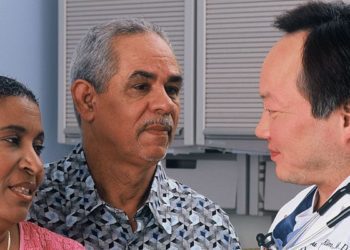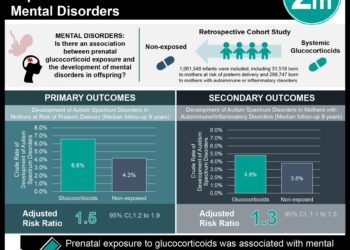Wellness Check: Mental Health
1. MYmind (a mindfulness-based therapy program) is comparable to cognitive behavioural therapy in improving attention scores in youths.
2. There were small to moderate improvements in behaviour, executive function, and overall well-being within treatment groups.
Evidence Rating Level: 1 (Excellent)
Attention deficit hyperactivity disorder (ADHD) is one of the most common disorders affecting school-aged children with a prevalence of 9-15%. The mainstay management for ADHD may involve both pharmacotherapy and behavioural therapy. However, mindfulness therapies have not been adequately compared to evidence-based therapies in the management of ADHD. The purpose of this study was to fill in this specific gap.
This randomized control trial (RCT) compared MYmind to cognitive behavioural therapy (CBT) to improve ADHD symptoms in children aged 8-12 in Hong Kong. MYmind is an 8-week mindfulness-based therapy program. In this RCT, 69 youths were randomized to the MYmind group and 69 youths were randomized to the CBT group. Children aged 8-12 with a confirmed diagnosis of ADHD based on DSM-5 criteria, who had a normal cognitive function, and who were either on no pharmacotherapy or on the same medication for 3 months were included. Children who could not speak Cantonese, who had previously participated in a mindfulness-based therapy, or who had a severe conduct disorder, other behavioural disorders, or another psychiatric or medical illness that prevented them from participating in the study were excluded. Participants were assessed before treatment, immediately after treatment, 3 months post-treatment, and finally 6 months post-treatment. Attention was assessed using the Sky Search subtest of the Test of Everyday Attention for Children (TEA-Ch). Behaviour, executive function, mindfulness, and overall well-being were also assessed using various recognized inventories. The primary outcome measured was the attention score based on TEA-ch. The secondary outcomes measured improvement in behaviour, executive function, and overall well-being.
The results found MYmind to be comparable to CBT in improving attention scores in youths with ADHD. Within-group data showed significant improvement in secondary outcomes, however MYmind was not shown to be superior to CBT concerning these outcomes either. A limitation of this study is that the study was carried out during the peak of the COVID-19 lockdowns and social unrest. This affected thorough follow-up and required the researchers to carry out some interventions over Zoom. However, this is the largest RCT carried out comparing mindfulness therapy to an evidence-based technique. The future of this research may involve performing a larger non-inferiority study, with longer post-treatment follow-up to assess the stability of outcomes post-intervention. Depending on future findings, mindfulness-based techniques may prove to be an adjunct or alternative therapy in the management of ADHD in youths.
Cognitive Behavioural Therapy May Lead To Brain Changes in Adolescents With Anxiety Disorders
1. Cognitive behavioural therapy (CBT) showed reduced activation in specific areas of the brain of adolescents with an anxiety disorder post-treatment.
2. Activation in these areas remained stable in adolescents at risk for AD not receiving CBT, supporting the neural response to cognitive behavioural therapy.
Evidence Rating Level: 1 (Excellent)
Approximately 31.9% of adolescents are affected by anxiety disorders (AD). Cognitive behavioural therapy (CBT) has proven to be an effective treatment for AD and remains the first-line treatment in clinical practice. The neural changes in the brain associated with CBT however have not been studied well.
This randomized control trial investigated the effects of CBT on the brains of adolescents with an AD by having participants complete threat processing tasks (TPT) during fMRI pre and post-CBT treatment. The dot-probe task was used as the TPT. Sixty-nine participants with an AD were compared to a control group of 62 participants without an AD. Additionally, 87 participants at risk for AD were also included to track the stability of neural activation without CBT over time. Participants between the ages of 8-17 with an IQ over 70, proficient in the English language, who had a confirmed diagnosis of an AD (general AD, social AD, separation AD) by semi-structured interview were included. Participants with any serious medical/psychiatric condition, suicidal ideation, substance abuse, or trauma history were excluded. The treatment group received 12 sessions of CBT. Participants were assessed weekly for clinical improvement using the pediatric anxiety scale and the clinical global impressions scale. The primary outcome measured changes to neural activation post-CBT treatment in adolescents with an AD.
Compared to the control group, fMRI data showed comparable or reduced activation in the fronto-parietal regions in the treatment group. Associated regions which included the temporal gyri, the inferior parietal lobules, and the middle occipital gyrus also showed reduced activation. Stability in these areas was seen in the at-risk group supporting treatment response to CBT. No effect was appreciated in the motor cortex, the right amygdala, or the lateral anterior frontal areas. These areas showed hyperactivation pre and post-treatment. A limitation of this study is that a large proportion of participants came from high-income households. It is important to keep in mind that these individuals may have access to resources that complement treatment that their low SES counterparts do not have. This may confound results by overestimating the effects of CBT alone on neural activation. Nevertheless, this study demonstrates important neural changes associated with CBT in specific areas of the brain of adolescents with ADs. Future research may contribute to tailoring CBT to target these areas specifically.
1. Combination therapy of empagliflozin and citalopram reduced symptom severity in patients with major depressive disorder.
2. This average reduction in symptom severity was statistically significant over time in comparison to the reduction of symptoms seen in the placebo-citalopram group.
Evidence Rating Level: 1 (Excellent)
Antidepressants like selective serotonin reuptake inhibitors (SSRIs) are presently first-line in the treatment of major depressive disorder (MDD). Unfortunately, only about 60% of patients with MDD see an improvement in their condition on SSRIs. Treatment for MDD is often supplemented with forms of psychotherapy like cognitive behavioural therapy. Recent studies have demonstrated a link between inflammatory processes and MDD. Empagliflozin, a sodium-glucose cotransporter inhibitor (SGLT2i) often used in the treatment of diabetes, and heart failure has been shown to reduce inflammatory processes and may be suitable as an adjunct to MDD treatment. The effectiveness of empagliflozin as an adjunct to MDD treatment however has not been investigated.
This 8-week double-blinded, placebo-controlled clinical trial compared the effectiveness of empagliflozin as an adjunct to citalopram (an SSRI) in the treatment of MDD to placebo-citalopram treatment. Ninety patients were randomly divided into a treatment and placebo group. Patients aged 18-60, who received a formal diagnosis by two psychiatrists based on DSM-V criteria, and who had moderate to severe MDD based on the Hamilton Depression Rating Scale (HDRS) were included. An HDRS score > 22 was regarded as moderate to severe. Patients who had another major psychiatric, or medical disorder, or who had received an antidepressant in the past 2 months, or SGLT2i in the past 3 months were excluded. The severity of symptoms was assessed using the HDRS at the beginning of the trial, at 4 weeks, and at the end. The primary outcome measured the severity of MDD symptoms using the HDRS.
HDRS scores of the group receiving empagliflozin + citalopram significantly improved versus the control group. At 4 weeks, the HDRS scores were 20.02 vs 13.76 in the control vs treatment groups, respectively. These scores improved to 13.42 and 7.00 at the completion of the study. While both groups experienced a reduction in symptom severity, further statistical analysis also showed that the average downtrend of the HDRS scores in the treatment group was greater and significant over time. One limitation of this study is that patients were initiated on citalopram at the onset of the study. Citalopram typically takes effect between 2-6 weeks. Therefore, the measure of symptom severity may be inaccurate in the study, and could also be attributed to external factors. Nevertheless, this study provides valuable results on the effectiveness of SGLT2is as an adjunct to the treatment of MDD. Further research should focus on further understanding the mechanism by which SGLT2is accomplishes this, as well as investigating the effectiveness through a larger study.
Image: PD
©2024 2 Minute Medicine, Inc. All rights reserved. No works may be reproduced without expressed written consent from 2 Minute Medicine, Inc. Inquire about licensing here. No article should be construed as medical advice and is not intended as such by the authors or by 2 Minute Medicine, Inc.






![Active smoking cessation intervention may provide tangible results [Project CLIQ]](https://www.2minutemedicine.com/wp-content/uploads/2014/12/smoking-e1418644951268-75x75.jpg)
